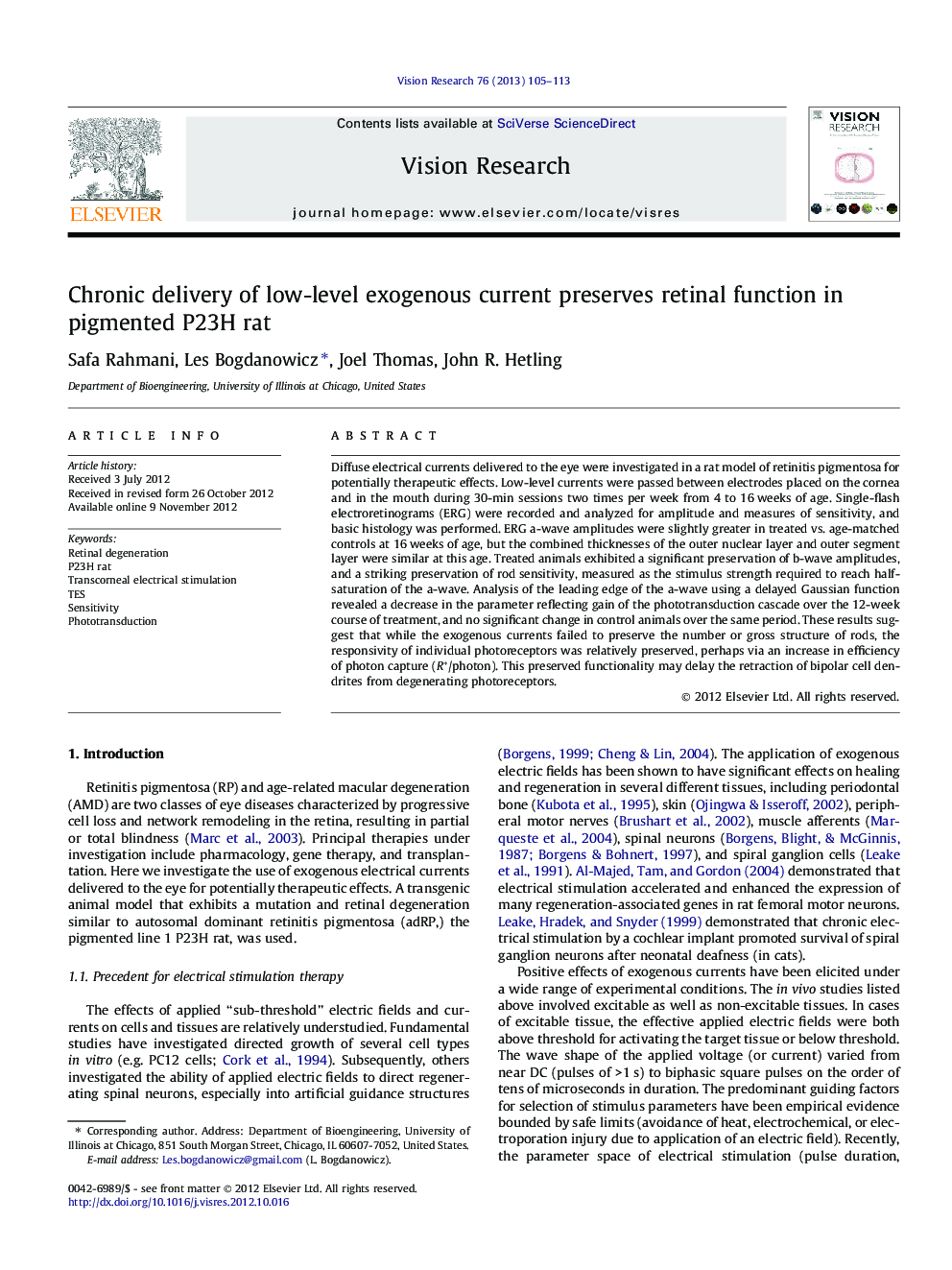| Article ID | Journal | Published Year | Pages | File Type |
|---|---|---|---|---|
| 6203643 | Vision Research | 2013 | 9 Pages |
Diffuse electrical currents delivered to the eye were investigated in a rat model of retinitis pigmentosa for potentially therapeutic effects. Low-level currents were passed between electrodes placed on the cornea and in the mouth during 30-min sessions two times per week from 4 to 16Â weeks of age. Single-flash electroretinograms (ERG) were recorded and analyzed for amplitude and measures of sensitivity, and basic histology was performed. ERG a-wave amplitudes were slightly greater in treated vs. age-matched controls at 16Â weeks of age, but the combined thicknesses of the outer nuclear layer and outer segment layer were similar at this age. Treated animals exhibited a significant preservation of b-wave amplitudes, and a striking preservation of rod sensitivity, measured as the stimulus strength required to reach half-saturation of the a-wave. Analysis of the leading edge of the a-wave using a delayed Gaussian function revealed a decrease in the parameter reflecting gain of the phototransduction cascade over the 12-week course of treatment, and no significant change in control animals over the same period. These results suggest that while the exogenous currents failed to preserve the number or gross structure of rods, the responsivity of individual photoreceptors was relatively preserved, perhaps via an increase in efficiency of photon capture (R*/photon). This preserved functionality may delay the retraction of bipolar cell dendrites from degenerating photoreceptors.
⢠Transcorneal electrical stimulation (TES) delivered to P23H rat model. ⢠ERG response was used to assess retinal function during the 12 week study. ⢠The ERG a-wave showed preservation compared to control group. ⢠TES treated animals had no reduction in sensitivity compared to control group. ⢠Results suggest a preservation of photoreceptor-bipolar cell coupling.
